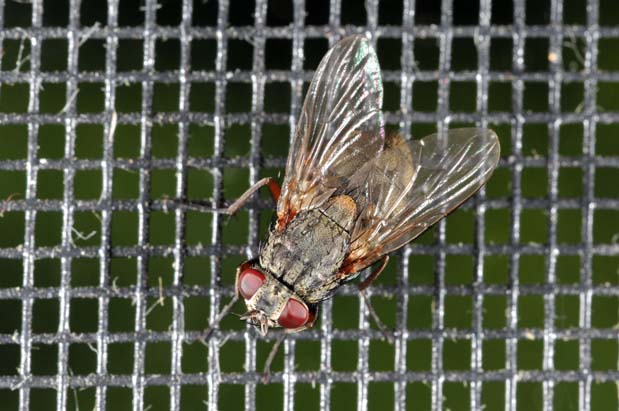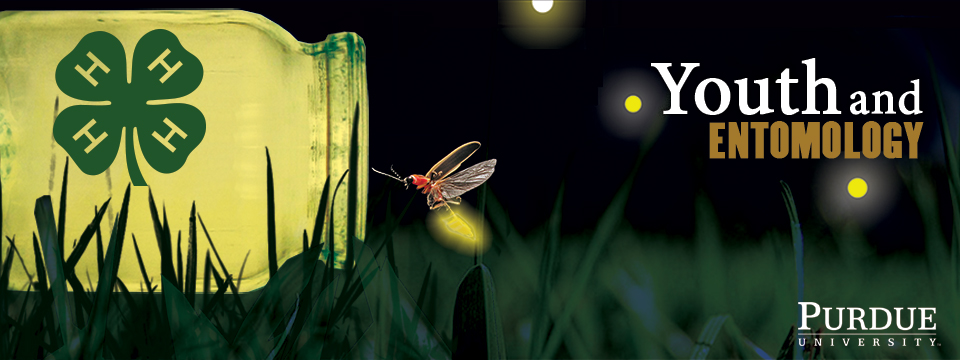

|
|
House Fly adult
(John Obermeyer, Purdue University) |
|
Common Name: House Fly - adult
See also: larva Scientific Name: Muscidae: Musca domestica Status: nuisance pest of homes and farms Damaging Stage: larval and adult Biology: Adults are 1/2 inch long and have a gray thorax with four, dark, longitudinal lines on the back. The undersides of their abdomens are yellow, and their bodies are covered with hair. They have red compound eyes. Females lay their eggs singly in moist environments. House fly larvae (maggots) are cream- or white-colored and cone-shaped. The head contains one pair of dark hooklike mouthparts. Maggots develop during a two-week period, and the pupal stage lasts less than one week. Adults may live for two months. There can be as many as twelve generations per year. Injury: Female house flies lay large numbers of eggs near suitable larval food sources (moist garbage, animal excrement, or decomposing plant material). Human health problems can occur with the movement of flies from animal or human feces to food made for human consumption. House flies can be responsible for transmitting pathogens such as Salmonella, Shigella, Enterococcus, and Chlamydia. Action Threshold: In homes, or public buildings the threshold for house flies is very low, not only because they are an annoyance but also because of the potential for disease transmission. In food plants or medical care facilities, the threshold may only be one fly. On the other hand, in animal-breeding facilities or waste-management sites, the threshold is much higher, for example, 150 flies per flypaper per 30 minutes. Management: The most effective way to control house fly populations is to implement sanitation and exclusion practices. Food should be kept in sealed containers, and spoiled food should be properly disposed of. Screens and airdoors can prevent flies from entering buildings. Sticky traps and electrocutor traps can be effective for indoor control. Specific pesticides can be used with caution, especially around humans or human foods. |
 |
||||||||||||||||
|
|
|||||||||||||||
|
Purdue Extension Entomology, 901 West State Street, West Lafayette, IN 47907 USA, (765) 494-4554 Department of Entomology | College of Agriculture | Extension © Purdue University | An equal access/equal opportunity university | Integrity Statement | Copyright Complaints | Maintained by ENTM IT Trouble with this page? Disability-related accessibility issue? Please contact us at entmwebmaster@purdue.edu so we can help. | ||||||||||||||||
